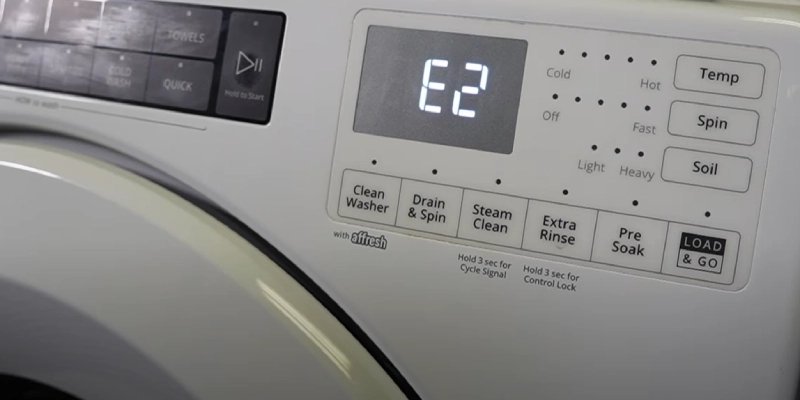
Here’s the deal: warranties on household appliances like washing machines can be a bit like a safety net, catching you when things go awry. However, whether your warranty covers the LE error code depends on a variety of factors, including the specifics of your warranty plan and the root cause of the issue. Let’s break it down further to see if you can get this covered or if you might need to consider alternatives.
Understanding the LE Error Code
To start, the LE error code typically refers to a motor issue in Whirlpool washing machines. Think of your washing machine’s motor as the heart of the machine — it’s what keeps everything running smoothly. When the LE code appears, it usually means there’s an issue preventing the drum from spinning properly, much like a bicycle chain slipping off its gears. This could be due to an overloaded drum or a snagged piece of clothing, but it might also indicate a more serious mechanical problem.
In a nutshell, the LE code is a catch-all notification. It points to several potential problems involving the machine’s motor, load balance, or even the drive system. As a beginner, it’s key to remember that while some of these issues might be minor and self-fixable, others could require professional assistance.
Before jumping to conclusions, try resetting your machine by unplugging it for a few minutes and then turning it back on. This might clear the error if it was just a temporary overload glitch. If the code persists, it’s worth diving deeper into your machine’s warranty details to understand what’s covered.
Exploring Your Warranty Coverage
Now, let’s talk about warranties. Most new Whirlpool washing machines come with a standard warranty that covers parts and labor for a certain period, usually a year or two. This standard warranty often includes coverage for malfunctioning components, which might include issues flagged by the LE error code, depending on its cause.
If the LE error is due to a manufacturing defect, like a faulty motor you didn’t contribute to, your warranty could very well cover the repair or replacement. It’s like buying a toaster and having it suddenly stop working due to a wiring issue — the manufacturer typically steps in to fix their mistake. However, if the error was caused by overloading the machine or improper use, it might not be covered, similar to warranties on a phone that don’t cover a cracked screen if you drop it.
For more peace of mind, some customers purchase extended warranties or service agreements. These plans can extend your coverage for several more years and might include more extensive repairs or even cover accidental damage. Review your specific plan’s terms, as these could vary significantly.
Steps to Take If Your Machine Shows an LE Error
If you’re seeing that dreaded LE code, don’t panic. Start by checking your warranty’s fine print. First, locate your warranty documentation — this is often provided with your purchase or sent via email. You might also find it on the manufacturer’s website using your model and serial number. Understanding the specifics can save you time and stress.
In the meantime, inspect your washing load. Make sure it’s balanced and not overloaded, since uneven or excessive loads are common triggers. It’s a bit like trying to carry too many grocery bags at once — something is bound to topple. Redistribute the clothes in the drum and try running the spin cycle again.
If the problem persists, it might be time to contact Whirlpool’s customer service or a trusted appliance technician. They can diagnose the issue more accurately and advise if you need a visit from a professional. Should their diagnosis point to a manufacturing issue, your warranty will likely cover the repairs.
Preventive Measures and Final Thoughts
Keeping your washing machine in tip-top shape can stave off future headaches like the LE error code. Regular maintenance, like cleaning the drum and ensuring you’re not overloading it, can be likened to routine check-ups at the doctor — they catch potential problems before they become major issues. Always use the right detergent type and quantity, as excessive suds can also contribute to motor strain.
In conclusion, while the LE error code might initially seem daunting, understanding what it represents and how your warranty might cover it can relieve much of the stress. Just like knowing whether your car insurance covers a fender bender, being informed about your appliance’s warranty can save you both time and money. Take proactive steps to fix minor issues, and remember that help is available if things get out of hand.